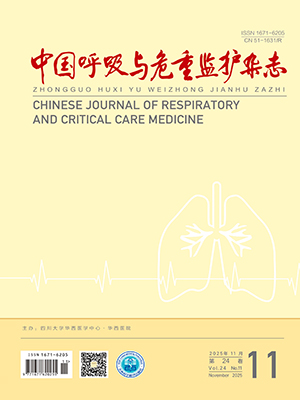Objective To compare the effects of high and low positive end-expiratory pressure( PEEP) levels on mortality and risk of barotrauma in patients with acute respiratory distress syndrome ( ARDS) . Methods Randomized controlled trials ( RCTs) were recruited from PubMed( 1966-2008. 9) ,EMBASE( 1980-2008. 9) , Cochrane Database ( Issue 2, 2008) , Chinese Cochrane Centre Database and CBMdisc ( 1978-2008. 9) . Related published and unpublished data and attached references were hand searched. All RCTs about ventilation with PEEP for patients with ARDS were included, then a systematic review were performed. Results Five eligible trials were enrolled in the systematic review. According to ventilation strategy, all trials were divided into subgroup A( low tidal volumes + high PEEP vs traditional tidal volumes + low PEEP) and subgroup B( low tidal volumes + high PEEP vs low tidal volumes + low PEEP) . In subgroup A, high PEEP was associated with a lower mortality[ RR 0. 59, 95%CI( 0. 43, 0. 82) ] and a lower prevalence of barotraumas [ RR 0. 24, 95% CI( 0. 09, 0. 70) ] in patients with ARDS. In subgroup B, the difference in mortality[ RR 0. 97, 95%CI( 0. 83, 1. 13) ] and barotraumas[ RR 1. 13, 95% CI( 0. 78, 1. 63) ]were not significant. Conclusions As compared with conventional ventilation, low tidal volumes and high PEEP ventilation strategy is associated with improved survival and a lower prevalence of barotraumas in patients with ARDS. It is necessary to further confirm the role of sole high PEEP in the ventilation strategy.
Citation: LI Zhiqiang,ZHUBo,WANGChangyou,QIUFang.. Effect of a High Positive End-Expiratory Pressure Ventilation Strategy in Patients with ARDS: A Systematic Review. Chinese Journal of Respiratory and Critical Care Medicine, 2009, 09(3): 279-283. doi: Copy
Copyright ? the editorial department of Chinese Journal of Respiratory and Critical Care Medicine of West China Medical Publisher. All rights reserved




